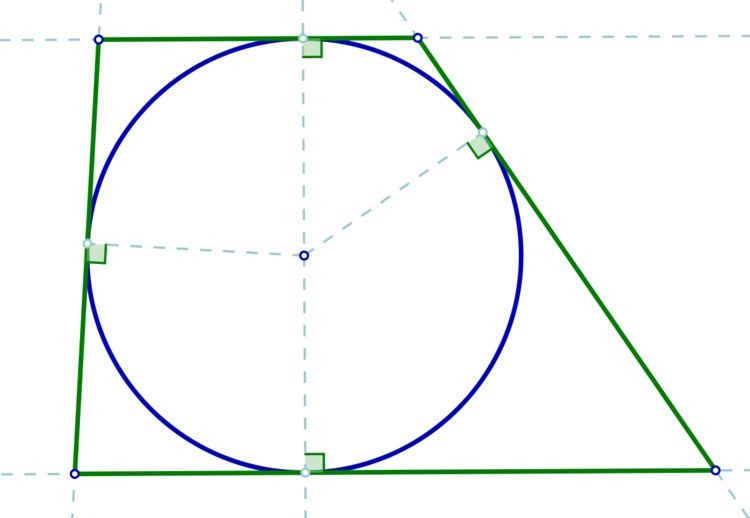 | ||
In Euclidean geometry, a tangential polygon, also known as a circumscribed polygon, is a convex polygon that contains an inscribed circle (also called an incircle). This is a circle that is tangent to each of the polygon's sides. The dual polygon of a tangential polygon is a cyclic polygon, which has a circumscribed circle passing through each of its vertices.
Contents
- Characterizations
- Uniqueness and non uniqueness
- Inradius
- Other properties
- Tangential triangle
- Tangential hexagon
- References
All triangles are tangential, as are all regular polygons with any number of sides. A well-studied group of tangential polygons are the tangential quadrilaterals, which include the rhombi and kites.
Characterizations
A convex polygon has an incircle if and only if all of its internal angle bisectors are concurrent. This common point is the incenter (the center of the incircle).
There exists a tangential polygon of n sequential sides a1, ..., an if and only if the system of equations
has a solution (x1, ..., xn) in positive reals. If such a solution exists, then x1, ..., xn are the tangent lengths of the polygon (the lengths from the vertices to the points where the incircle is tangent to the sides).
Uniqueness and non-uniqueness
If the number n of sides is odd, then for any given set of sidelengths
Inradius
If the n sides of a tangential polygon are a1, ..., an, the inradius (radius of the incircle) is
where K is the area of the polygon and s is the semiperimeter. (Since all triangles are tangential, this formula applies to all triangles.)
Other properties
Tangential triangle
While all triangles are tangential to some circle, a triangle is called the tangential triangle of a reference triangle if the tangencies of the tangential triangle with the circle are also the vertices of the reference triangle.
